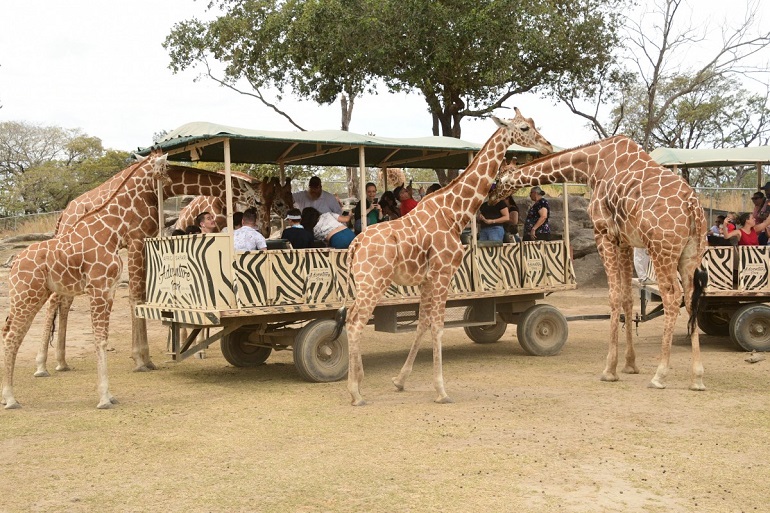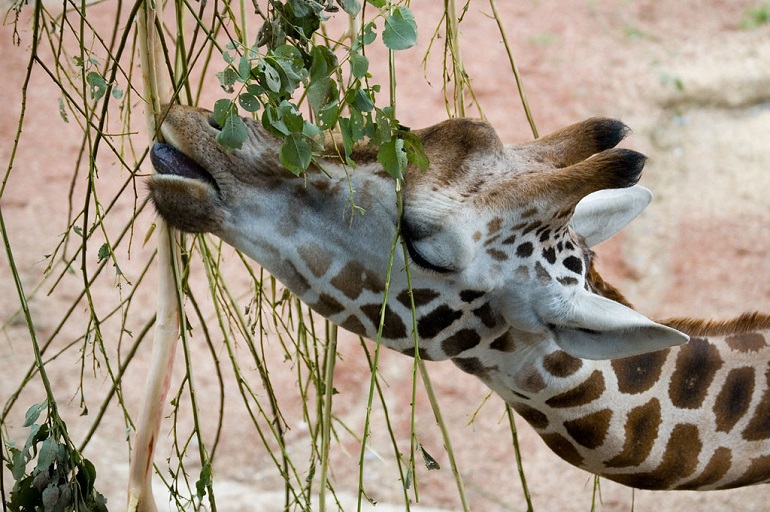Giraffes are one of the most majestic animals on the planet. These tall, elegant creatures have long necks and can be found in African countries.
Giraffes are easily recognizable by both their height and their spots. The giraffe’s neck is long enough to allow them to reach leaves on trees that other animals can’t.
Giraffes are the tallest of all land mammals, with males reaching up to 18 feet tall and females up to 16 feet. They are also one of the heaviest, with males weighing 3,000 pounds and females weighing 2,700 pounds.
Despite their size, giraffes are gentle giants and very curious animals. While they may seem tame, giraffes are wild animals and should be treated respectfully. Learn more about these fascinating animals in this blog post.
Giraffe Species
Giraffe species are spread across Africa, some living in sub-Saharan regions and others in the more arid northern and southern parts of the continent.
The four distinct species of giraffe are Masai giraffes (G. tippelskirchi), Reticulated giraffes, Northern giraffes (G. Camelopardalis), (G. reticulata), and Southern giraffes (G. Giraffa).
There are nine subspecies of giraffes, but all have similar coat patterns of large, irregular-shaped spots. These spots are unique to each giraffe, much like human fingerprints.
The Masai giraffe is the tallest, largest, and busiest of the four. It lives in East Africa and southeastern Kenya. The Reticulated giraffe is distinguished by its large patches, separated by narrow white lines. They inhabit Somalia, Ethiopia, northern Kenya, and South Sudan. The Northern giraffe has two subspecies, the Kordofan giraffe and the Nubian giraffe. They live in western Ethiopia, northeastern Congo (Kinshasa), southern Chad, and the northern Central African Republic. The last species is the Southern giraffe with four subspecies: the Angolan giraffe, South African giraffe, Zimbabwean giraffe, and Swazi giraffe. It lives in southern Africa in Botswana, Namibia, South Africa, Zimbabwe, and Mozambique.
The northern giraffe has a longer neck than the southern giraffe. The southern giraffe also has spots arranged in a chevron pattern, while the northern giraffe’s spots are more random.
Morphology of Giraffes
Giraffes are the tallest land mammal, with males reaching heights of up to 18 feet (5.5 meters). Female giraffes are slightly shorter, with an average height of 16 feet (4.9 meters).
The neck of a giraffe is incredibly long, measuring between 6 and 8 feet (1.8 and 2.4 meters). This long neck is used for reaching leaves high up in trees.
Their backs are slightly arched, and their coat is covered with spots, which help them camouflage in their natural habitat.
Male giraffes are usually taller and heavier than female ones. They have skin-covered knobs on their heads called “ossicones,” used primarily for protection during fights between two individuals competing over mates or territory rights.

Behavior and Habits
Giraffes are curious and social animals that live in herds of up to 40 individuals. These herds are made up of males and females, but there is a clear hierarchy, with dominant males at the top. Males will use their size and strength to assert dominance, often engaging in physical confrontations with other males. Females and young giraffes stay at the edge of the herd, where they are better protected from predators.
Giraffes are mostly active during the day, although they may be active at night if there is enough moonlight. They spend their days eating, resting, and socializing. Giraffes are generally perceived as peaceful animals.
Reproduction
Giraffes reproduce sexually, and the female gives birth to a single calf after a gestation period of about 15 months. The calf is born with spots that help it camouflage in its natural habitat.
Giraffes reach sexual maturity at 3-4 years old. Females usually give birth every two to three years.

Where Do Giraffes Live?
Giraffes are native to Africa, south of the Sahara desert, and can be found in countries like Kenya, Tanzania, and Cameroon. They prefer to live in savannahs, woodlands, and shrublands.
What Do Giraffes Eat?
Giraffes are herbivores, and they spend most of their time eating. They browse on the leaves of trees and bushes, and they can consume up to 75 pounds of foliage each day. Giraffes are also known to eat seeds of acacia trees, which are poisonous to many other animals. Giraffes also eat fruit, flowers, and twigs. To get to the leaves, giraffes use their long necks and tongues.
Giraffe Special Characteristics
The giraffe’s neck is one of its most distinctive features. It is long enough to allow the giraffe to reach leaves on trees that other animals can’t. The neck is also used for defense, as the giraffe can swing its head around and hit an attacker with its horns.
The giraffe’s spotted coat provides camouflage in its natural habitat. The spots are arranged in a unique pattern that is different for each individual.

How Long Do Giraffes Live?
Giraffes have a lifespan of around 25 years.
Are Giraffes an Endangered Species?
The International Union for Conservation of Nature (IUCN) has classified giraffes as a “vulnerable” species, which means they are at risk of becoming endangered in the near future. According to the IUCN, the population of giraffes has declined by 40% over the past 30 years, and they are now mostly found in protected areas.
Threats
There are several threats to giraffes, including habitat loss, poaching, and civil unrest. The major threat to giraffes is illegal hunting. Giraffes are often killed for their meat, considered a delicacy in some cultures, and their bones and other body parts are used for traditional medicine and to make tools and furniture. They are also sometimes killed for their tails, considered lucky charms. As the demand for these products continues to grow, so does the pressure on giraffe populations.
The primary threat to giraffes is habitat loss and fragmentation. As human populations continue to develop land for agriculture and settlement, we are encroaching more and more on the natural habitats of giraffes and other wildlife. This reduces the amount of space available for giraffes to roam and increases the rate at which they come into contact with humans, which can lead to conflict.
The good news is that many organizations are working to protect giraffes and their habitats.

What Can You Do To Help Giraffes?
There are several things you can do to help giraffes. You can support organizations working to protect them, spread the word about the importance of conservation, and avoid products made from their meat or bones. You can also help their habitat by planting trees and bushes in your backyard!
You can help by donating to Giraffe Conservation Foundation, “Save the Giraffes,” or other organizations working to protect giraffes and their habitats. Every little bit helps!
Why Are People Not More Aware of the Decline of Giraffe Populations?
One possible reason people are not more aware of the decline of giraffe populations is that the problem has not been widely publicized. Another reason could be that people do not realize the serious problem. Giraffes are such an iconic species that it is hard to believe that they could be in danger of extinction, but unfortunately, that is the case.
Final Thoughts
The decline of giraffe populations is a serious problem that needs to be addressed. Giraffes are an important part of the African ecosystem and play a vital role in many people’s lives. We need to do everything we can to protect them.












